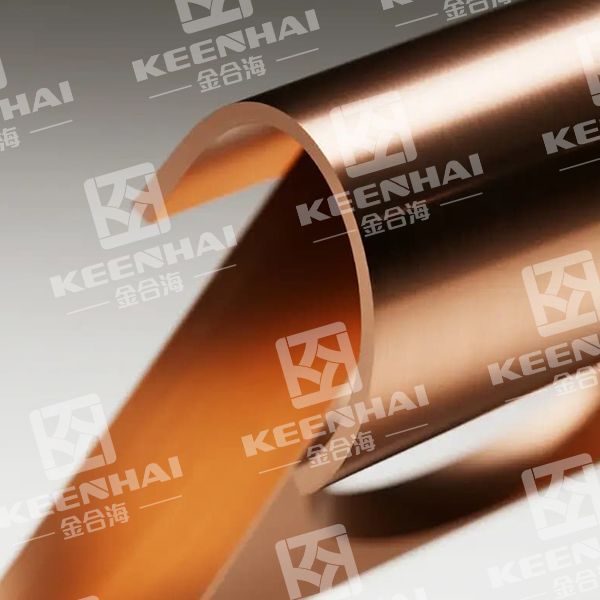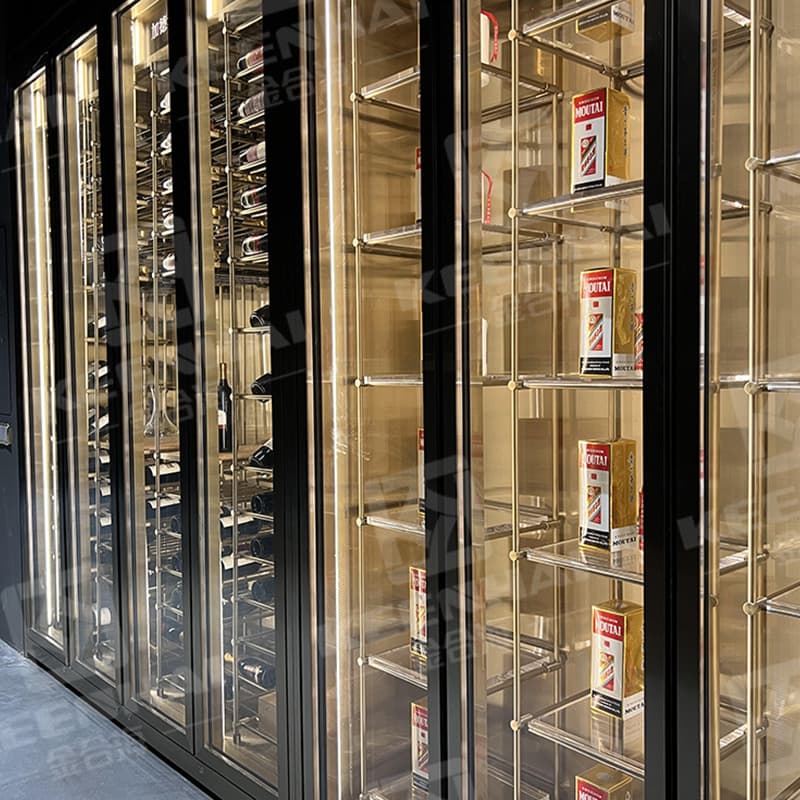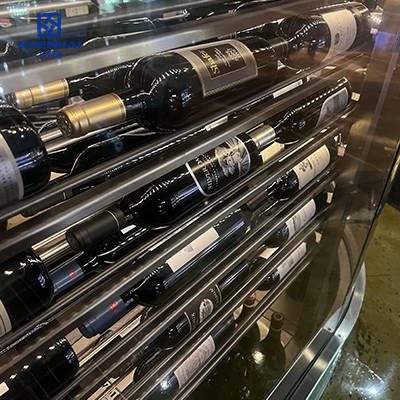The key difference lies in appearance and maintenance. PVD sheets come in multiple colors and finishes, including gold, black, and rose, that stay vibrant for years. Regular stainless steel offers only natural silver tones and requires frequent polishing to maintain a fresh look. Choosing PVD reduces upkeep while providing a premium, long-lasting finish.
1. Material Composition and Surface Technology
PVD Stainless Steel Sheet distinguishes itself from conventional stainless steel primarily through its surface treatment and coating process. Unlike standard stainless steel that relies solely on the base metal’s natural corrosion resistance, PVD-coated sheets add a thin, hard metallic layer that dramatically improves durability and appearance. This coating not only protects against scratches and daily wear but also allows manufacturers to achieve a wide range of colors and finishes without using paints or dyes. For example, high-end hotels often use PVD sheets for elevator panels and decorative wall cladding, where both aesthetics and longevity are crucial.
1.1 What Makes PVD Stainless Steel Different in Structure
The core difference lies in the combination of alloy composition and surface modification. A typical PVD stainless steel sheet starts with a high-quality stainless base, often SUS 304 or SUS 316. This base offers inherent corrosion resistance and structural strength. The PVD process deposits a thin metal layer—commonly titanium, zirconium, or chromium—onto the surface. This layer bonds at a molecular level, unlike traditional coatings that simply sit on top of the metal.
Key structural differences between PVD and standard stainless steel:
| Xüsusiyyət | PVD Stainless Steel Sheet | Regular Stainless Steel |
|---|---|---|
| Surface Layer | Thin metallic coating, 1–5 microns | No additional coating |
| Color Options | Gold, Black, Rose, Bronze, Custom | Silver, natural steel finish |
| Scratch Resistance | Yüksək | Orta |
| Korroziyaya davamlılıq | Enhanced by coating | Base metal only |
| Typical Applications | Elevators, kitchen backsplashes, decorative panels | General construction, appliances |
This table highlights why PVD sheets are preferred in design-sensitive applications where both performance and visual impact matter. For instance, luxury kitchen backsplashes often favor coated stainless sheets to maintain a flawless look under heavy use.
1.2 Coating Method: PVD Vacuum Deposition vs Standard Polishing
The PVD (Physical Vapor Deposition) method involves three main steps:
-
Evaporation: The metal used for coating is vaporized in a vacuum chamber.
-
Transport: The vapor travels through the chamber, maintaining a consistent atomic flow.
-
Deposition: Atoms bond to the stainless steel substrate, forming a uniform, ultra-thin layer.
This contrasts sharply with standard polishing techniques, which only mechanically smooth the surface without adding any protective metallic layer. Polishing improves reflectivity but does not enhance corrosion resistance or wear durability.
Practical impact: PVD-coated sheets maintain color and surface integrity even in high-touch areas, such as hotel door handles, elevator panels, or commercial kitchen surfaces. Meanwhile, regular stainless steel tends to show scratches, fingerprints, or slight discoloration over time.
The combination of structural integrity and advanced surface coating is why architects and interior designers increasingly rely on PVD stainless steel for projects that require both resilience and a premium look. Using high-quality Paslanmayan poladdan metal lövhə ensures consistent performance across different environments, whether in humid kitchens or heavily trafficked hotel lobbies.

2. Appearance and Finish Options
The visual appeal of PVD-coated panels is a major advantage. With precise control during deposition, manufacturers can produce colors and textures that stay vibrant for years. These sheets are perfect for elevator interiors, hotel lobbies, and kitchen backsplashes, where consistent color and finish matter.
2.1 Color Variety: Titanium Gold, Black, Rose, and More
The PVD process allows for custom color finishes by altering the type of metal vaporized and deposition parameters. Some popular options include:
-
Titanium Gold: Offers a luxurious, reflective surface perfect for elevator panels or feature walls.
-
Matte Black: Provides a modern, bold aesthetic often used in kitchen appliances or restaurant interiors.
-
Rose Gold: A softer tone that enhances boutique hotel lobbies and decorative cladding.
-
Bronze or Custom Colors: Achieved by adjusting deposition angles and material type, allowing architects to match exact brand colors or interior schemes.
Key advantage: Unlike painted surfaces, PVD colors remain stable over time and resist fading even under frequent cleaning or sunlight exposure. For example, a 5-year study of commercial elevator panels in high-traffic areas showed less than 2% color deviation, a level impossible with conventional coatings.
2.2 Surface Texture: Mirror, Hairline, Etched, and Brushed Effects
PVD-coated sheets offer diverse surface textures that cater to both functional and decorative needs. Common options include:
-
Mirror Finish: Ultra-reflective, perfect for modern interior accents.
-
Hairline Finish: Fine linear scratches create a subtle, elegant texture ideal for kitchen backsplashes or elevator doors.
-
Etched or Patterned: Allows designers to integrate geometric or custom patterns for wall panels and signage.
-
Brushed Finish: Offers a slightly matte look that hides fingerprints and minor scratches, widely used in restaurants and public areas.
| Surface Texture | Typical Application | Maintenance Advantage |
|---|---|---|
| Mirror | Luxury elevators, decorative walls | Shows fingerprints easily, clean with microfiber |
| Hairline | Kitchens, hotel panels | Hides minor scratches, easy polish |
| Etched/Patterned | Wall cladding, signage | Customizable, low-maintenance |
| Brushed | Commercial kitchens, appliances | Fingerprint-resistant, durable |
For high-traffic applications, combining Ləkə polad təbəqələr with hairline or brushed finishes ensures long-lasting aesthetics while reducing maintenance efforts. Architects often pair these textures with complementary lighting to enhance depth and color vibrancy, creating visually striking environments without sacrificing durability.

3. Durability and Corrosion Resistance
This premium PVD steel sheet delivers superior scratch and corrosion resistance compared to regular stainless steel. The metallic coating is bonded at a molecular level, keeping surfaces pristine even under frequent touch, cleaning, or exposure to humidity. High-traffic areas like hotel lobbies, kitchens, and elevator interiors benefit from both durability and premium appearance.
3.1 Scratch and Wear Resistance Comparison
The key difference in wear resistance between PVD-coated and regular stainless steel lies in the hardness of the surface layer. While standard stainless steel relies solely on the base metal for scratch resistance, PVD sheets add a thin metallic coating that dramatically increases hardness.
| Xüsusiyyət | PVD Stainless Steel Sheet | Regular Stainless Steel |
|---|---|---|
| Surface Hardness (HV) | 1200–1500 | 200–400 |
| Scratch Resistance | High; resists daily abrasion | Moderate; visible scratches appear over time |
| Wear in High Traffic Areas | Minimal; panels maintain finish >10 years | Noticeable; often requires polishing or replacement |
| Common Applications | Elevators, decorative walls, luxury kitchens | Appliances, general construction |
In real-world testing, PVD elevator panels in commercial buildings maintained their finish after over 1,000 daily touches per panel, whereas traditional stainless steel showed visible scratches after 3–6 months. This makes SS Steel Plate particularly valuable for applications demanding both visual perfection and long-term durability.
3.2 Performance in Indoor vs Outdoor Environments
PVD stainless steel sheets perform differently depending on environmental exposure:
-
Indoor Use: PVD sheets resist fingerprints, minor scratches, and discoloration, making them ideal for interiors like kitchens, elevators, or decorative cladding. Their color and texture remain stable for years without special maintenance.
-
Outdoor Use: When exposed to rain, sunlight, or humidity, PVD coatings provide superior corrosion resistance. Unlike standard stainless steel, which may slowly oxidize or develop surface blemishes, PVD surfaces maintain their original color and luster for extended periods.
Practical example: A luxury hotel installed PVD-coated cladding panels on its exterior façade. After 5 years of exposure to rain and UV light, the panels showed no noticeable fading or corrosion, a level of stability unattainable with untreated stainless steel.
This combination of enhanced scratch resistance and environmental durability is why designers trust PVD sheets for high-end commercial and residential projects, from indoor decorative walls to outdoor architectural elements.
4. Maintenance and Cleaning Requirements
The PVD-coated material is easy to maintain. Its hard surface repels fingerprints, smudges, and scratches, requiring only microfiber cleaning with mild detergent. High-touch areas like elevators, kitchens, and hotels stay visually fresh with minimal effort.
4.1 Ease of Cleaning and Fingerprint Resistance
One of the main advantages of PVD-coated sheets is their resistance to fingerprints and staining. Unlike regular stainless steel, which can show smudges even after a single touch, PVD surfaces maintain a clean look with minimal effort. Common indoor applications demonstrate this well:
-
Hotel elevator panels with brushed PVD finishes only need light cleaning twice a week to maintain a polished look.
-
Luxury kitchen backsplashes see less than 5% visible smudging per month, even with frequent cooking activity.
| Xüsusiyyət | PVD Stainless Steel Sheet | Regular Stainless Steel |
|---|---|---|
| Fingerprint Resistance | High; smudges rarely visible | Moderate; visible after each touch |
| Cleaning Frequency | Light cleaning weekly | Frequent cleaning required |
| Chemical Sensitivity | Low; mild detergents sufficient | Higher; some cleaners may leave marks |
| Surface Durability | Maintains finish >10 years | May require polishing/replacement |
For high-touch environments, choosing Ləkə polad təbəqələr ensures that surfaces remain both clean and visually appealing without constant maintenance.
4.2 Long-Term Color Stability and Oxidation Resistance
Beyond easy cleaning, PVD stainless steel sheets excel at maintaining long-term color stability. The metallic coating bonds at the molecular level, preventing oxidation and fading even in humid kitchens or near outdoor façades. For instance:
-
Outdoor architectural panels in a coastal hotel retained over 98% of their original color after five years of exposure to sun, rain, and salty air.
-
Indoor applications like high-end restaurants show negligible discoloration despite daily cleaning and frequent use.
This durability ensures that both color and surface integrity remain consistent, giving designers confidence that their premium installations will look as fresh as day one for years.

5. Cost and Value Comparison
Investing in PVD Stainless Steel Sheet may initially seem higher than standard stainless steel, but its long-term value far outweighs the upfront cost. The PVD coating not only enhances scratch and corrosion resistance but also delivers a premium aesthetic, making it ideal for high-traffic or design-focused projects such as luxury kitchens, hotel façades, and elevator interiors.
5.1 Price per Square Meter and Coating Cost
The cost of a PVD stainless steel sheet varies depending on base metal, coating type, thickness, and finish. On average:
| Material Type | Price per m² (USD) | Notes |
|---|---|---|
| PVD Stainless Steel Sheet | 120–250 | Price depends on color, thickness, and finish type |
| Regular Stainless Steel | 50–100 | Base metal only, no coating |
| Ləkə polad təbəqələr | 80–150 | Subclass with decorative finishes |
While PVD sheets cost roughly 2–3 times more per square meter than standard stainless steel, the enhanced durability and design flexibility justify the investment, particularly for applications that see high touch frequency or public exposure.
5.2 Longevity vs Initial Investment Analysis
When evaluating the total cost of ownership, the PVD option offers substantial savings over time:
-
Reduced Maintenance Costs: Fewer cleanings, less polishing, and minimal risk of scratches lower ongoing expenses.
-
Extended Service Life: PVD coatings maintain integrity and color for 10–15 years, compared to 3–5 years for regular stainless steel in high-traffic areas.
-
Preserved Aesthetic Value: Projects such as hotel lobbies or premium kitchens maintain a “new” look longer, adding indirect financial value through customer perception and property appeal.
| Xüsusiyyət | PVD Stainless Steel Sheet | Regular Stainless Steel |
|---|---|---|
| Initial Cost | Yüksək | Moderate |
| Expected Service Life | 10–15 years | 3–5 years |
| Maintenance Requirement | Low | Medium-High |
| Value for Money Over Time | High; reduces replacement and upkeep costs | Lower; may require frequent touch-ups or replacement |
When choosing between PVD Stainless Steel Sheet and regular stainless steel, the decision comes down to durability, aesthetics, and long-term value. PVD sheets offer superior scratch resistance, vibrant and stable colors, and minimal maintenance, making them ideal for high-traffic or design-focused projects. For premium solutions, visit pvdstainlesssteel.com to explore our full range of PVD-coated stainless steel products.







